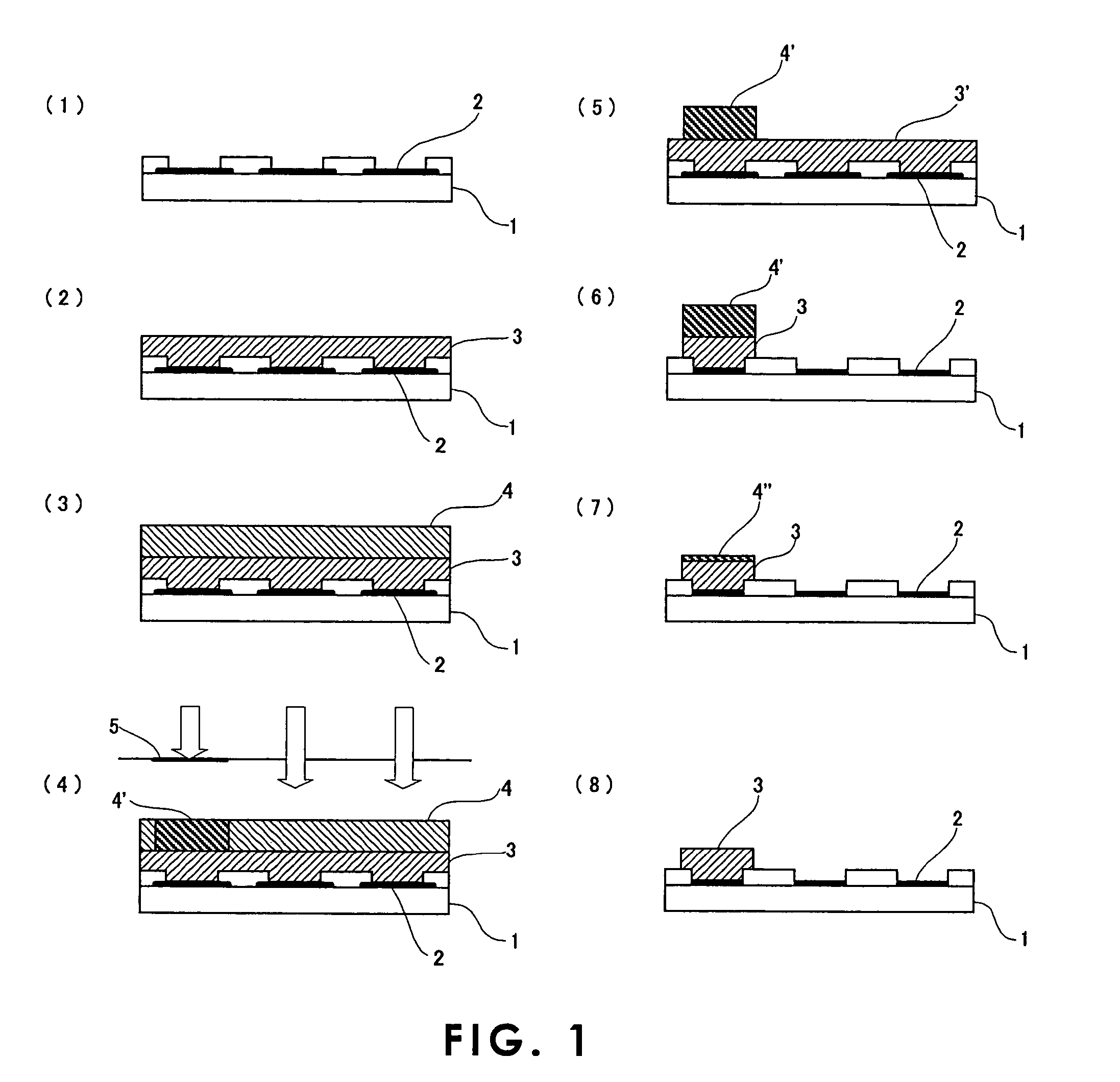Process for producing electroluminescent element
a technology of electroluminescent elements and process steps, which is applied in the manufacture of electrode systems, electric discharge tubes/lamps, instruments, etc., can solve the problems of adversely affecting and achieve the effect of improving the luminescence efficiency of el elements
- Summary
- Abstract
- Description
- Claims
- Application Information
AI Technical Summary
Benefits of technology
Problems solved by technology
Method used
Image
Examples
example 1
Removal of Surface Layer in Luminescent Layers with Solvent
[0078](1) Provision of Base Material
[0079]Preparation of Coating Liquid for Buffer Layer Formation
[0080]γ-Glycidoxypropyltrimethoxysilane containing a glycidoxy group (—CHOCH2) as an organic functional group (TSL8350, manufactured by Toshiba Silicone Co., Ltd.) was added to a commercially available material for buffer layer formation (poly-3,4-ethylenedioxythiophene / polystyrene sulfonate: PEDT / PSS; Baytron P, manufactured by Bayer) to a concentration of 1% by weight based on the solid content of PEDT / PSS to prepare a coating liquid for buffer layer formation.
[0081]A substrate having a size of 6 in. square and a thickness of 1.1 mm with a patterned ITO electrode provided thereon was provided and was cleaned. The coating liquid (0.5 ml) for buffer layer formation prepared above was dropped on this substrate, followed by spin coating at 2500 rpm for 20 sec to form a buffer layer on the base material. The thickness of the buffer...
example 2
Removal of Surface Layer in Luminescent Layers by Plasma Treatment
[0097]An EL element 2 having a construction of base material / first electrode / buffer layer / luminescent layer (R, G, B) / second electrode was prepared in the same manner as in Example 1, except that, in the step of removing the surface layer part in the EL layers, the surface of the formed individual luminescent layers was subjected to plasma treatment. The plasma treatment was carried out in an argon gas atmosphere under conditions of RF power 200 W and chamber pressure 10 mTorr.
example 3
Removal of Surface Layer in Luminescent Layers with Solvent
[0098]An EL element 3 having a construction of base material / first electrode / buffer layer / luminescent layers (R, G, B) / second electrode was prepared in the same manner as in Example 1, except that, in the step of removing the surface layer part in the EL layers, a mixed solvent composed of monochlorobenzene and ethyl acetate (mixing ratio=1:1) was dropped on the surface of the formed individual luminescent layers, and the assembly was spun by spin coater at 3000 rpm to clean the surface layer part in the luminescent layers.
PUM
| Property | Measurement | Unit |
|---|---|---|
| depth | aaaaa | aaaaa |
| depth | aaaaa | aaaaa |
| thickness | aaaaa | aaaaa |
Abstract
Description
Claims
Application Information
 Login to View More
Login to View More - R&D
- Intellectual Property
- Life Sciences
- Materials
- Tech Scout
- Unparalleled Data Quality
- Higher Quality Content
- 60% Fewer Hallucinations
Browse by: Latest US Patents, China's latest patents, Technical Efficacy Thesaurus, Application Domain, Technology Topic, Popular Technical Reports.
© 2025 PatSnap. All rights reserved.Legal|Privacy policy|Modern Slavery Act Transparency Statement|Sitemap|About US| Contact US: help@patsnap.com

